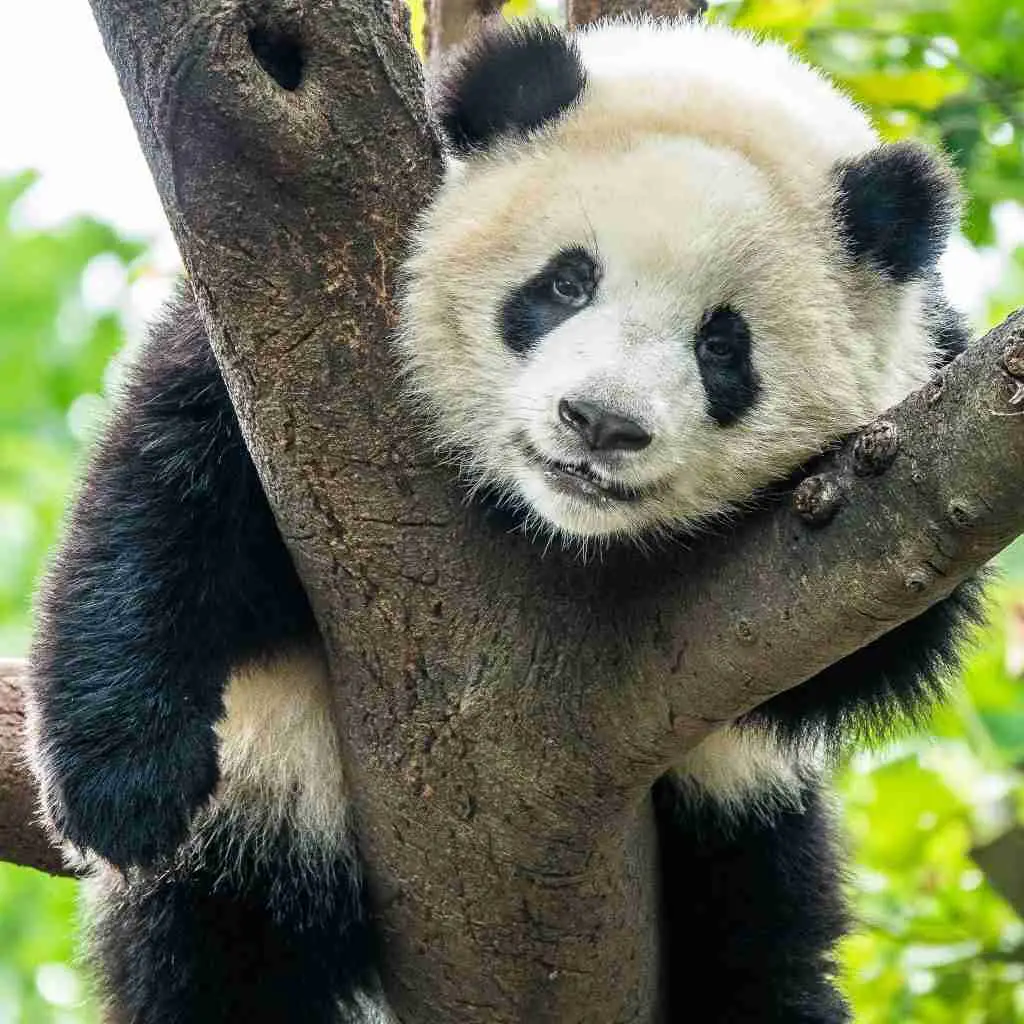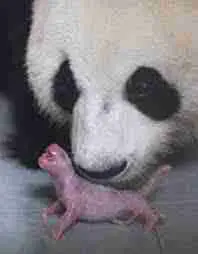Many are somewhat confused about what kind of animals pandas are. They’re thought to be like other animals, such as bears, racoons, cats and mostly bears but are nothing like them at all. Aside from marsupials, like kangaroos, no mammal gives birth to tiny babies the way pandas do, and this makes me wonder, are giant pandas mammals?
Absolutely! Giant pandas are placental mammals. Not only are they mammals but one of the rarest mammals you can see around the world. They are bear-like creatures but do very little of the things that carnivores, like bears, normally do.
Having known that they are mammals, you might know the things that make these cute creatures mammals, and if they’re things one can easily spot them, especially kids. Let’s go deeper to find out.
Why are Giant Pandas Mammals?
Mammals have general properties that make them what they are. Let’s look at the reasons giant pandas are classified as mammals.
Pandas Are Warm-blooded
Helps them maintain a steady inner body temperature no matter the area they’re in. An interesting fact about being warm-blooded is the ability to adapt to any temperature of an area. When it’s hot, their bodies can cool down, and when it’s pretty cold their bodies can generate heat.
For an animal who lives in China mountains that get cold, especially during winter, they need to stay warm to survive.
Pandas Have Fur on their Bodies

A panda’s fur is very unique with a color of black and white. This is a coating that can help you easily spot a panda in its habitat or wherever you see one. It helps them camouflage well in their environment and communicate.
Moreover, aside from pandas being warm-blooded, their fur is pretty thick and also helps them stay warm during cold times.
Recommended Reading: What Color is a Giant Panda?
Baby Pandas Are Born Alive (Not Hatched From Eggs)

Panda babies are born alive just like all mammals do. However, they do it more like the human way. A female panda stays pregnant for about 95 – 160 days before they bear their cubs and this is common to only placental mammals. Their unborn cub is usually fed by the placenta of their moms just like humans.
These cubs appear first without fur, very small in size, and pink in color. As they grow up, they’ll begin to gain fur, especially grey and white as growing cubs, till they get their fully unique black and white fur.
Mother Pandas Feed Young Cubs with Milk
Pandas feed their cubs with milk. Parental care is usually high among mammals and feeding their young ones is something they take seriously. Every mammal has a mammary gland for milk and pandas are no exceptions to this. Young cubs normally live on their mother’s milk in their early months till they’re fit to eat their beloved bamboo.
Examples of Mammals Besides Giant Pandas
Aside from giant pandas, there are other mammals around the world. These animals appear to be in certain groups of dog-like, cat-like, or even bear-like species that pandas fall in. Some of these mammals are rare as the Giant panda.
Mammals in a group could have things in common like resemblance or character. Here is a list of some of these mammals.
- Red panda
- Snow leopard
- Black-backed jackal
- Brown hyena
- Brown bear
- Honeybadger
- Black-footed ferret
- Aardwolf
- Meerkat
- Wolverine
- Arctic fox
- Red fox
- Polar bear
- Stoat
- Least weasel
- Fisher
- Dhole
- Cheetah
- Coyote
- Racoon
- Walrus
- Fossa
- Lion
- American Black bear
- Tiger
- Crabeater seal
- Harbour seal
- Maned wolf
- Caracal
Is a Panda a Mammal for Kids?
Yes, a panda is a mammal for kids. There’s no hidden or confusing thing about pandas being mammals. They have some main properties of mammals that even kids can spot like bearing young ones alive and feeding milk to their babies.
Some other properties of mammals may not be easy for kids to know like having four-chambered heart or middle ear bones and this is where they might get confused describing pandas as mammals. So, with the main properties, it’s easy for kids to describe a panda as a mammal.
Final Thoughts
In summary, giant pandas are placental mammals. They have characteristics that are common to mammals like mammary glands, and being warm-blooded. Despite being among the category of carnivores, they spend their whole life eating bamboo.
It’s interesting to know that these black and white vegetarians are unique mammals. Do well to share this article if it’s helpful!

